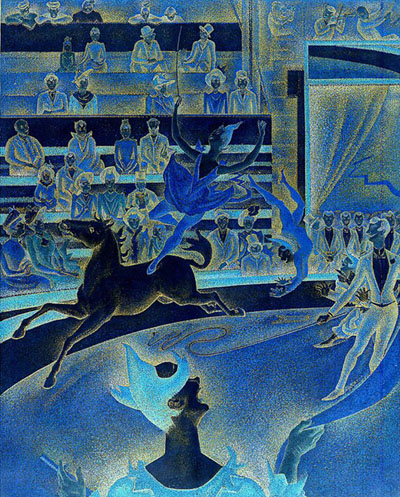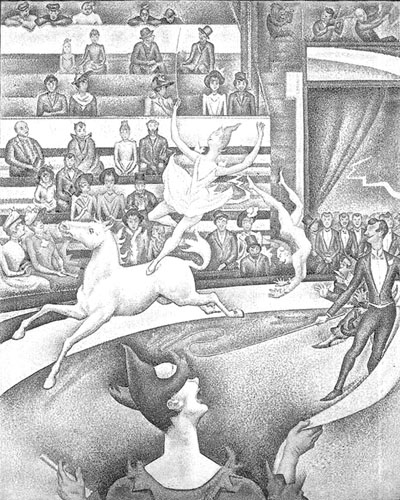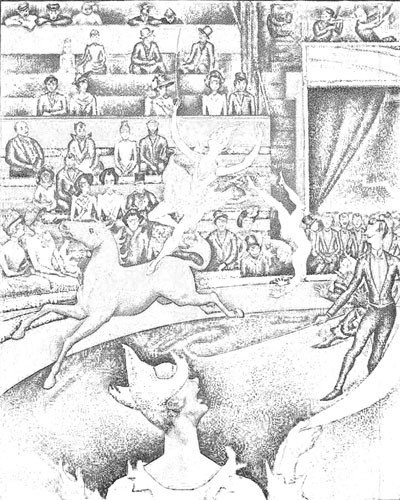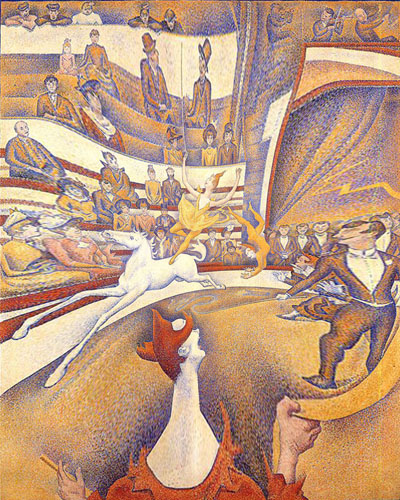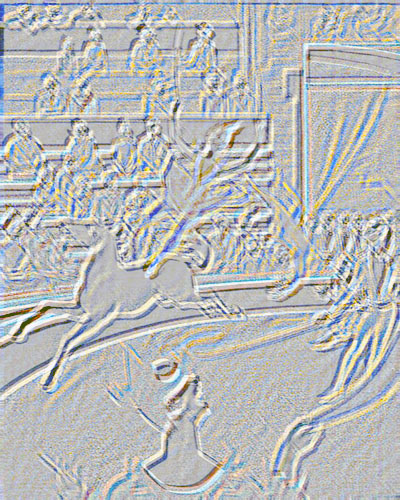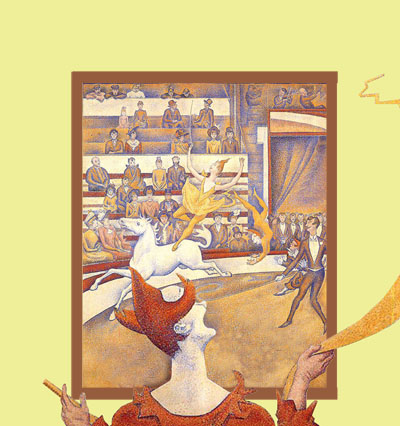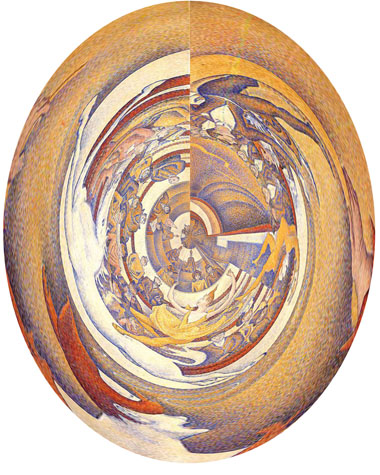
This image was created through a distortion (by applying the ‘change polar coordinate’s filter). It gives a somewhat similar impression of looking at the The Circus through a reflective spherical ball.
Through the distortion, it is still possible to make out certain main characters in the original image, if you know what you are looking for… but by and large, a viewer viewing this directly may have trouble figuring out the image that is being reflected in the ball… Hence, a viewer looking at this image, may be fascinated by the effect of this reflection on a concave surface rather than the masterpiece itself!
This form of distortion creates an optical illusion which is known scientifically as ‘Stereoscopic Vision’. Nigel Rodgers in ‘Incredible Optical Illusions’ explains, “Each eye gives us a slightly different view: the nearer the subject, the greater the difference. The brain combines the different views to give us ‘stereoscopic vision’ which enable us to judge shape, distance, depth, and dimension with ease.
REF:
Rodgers, N. (1997). Incredible Optical Illusions. Holland: Cordon Art.
